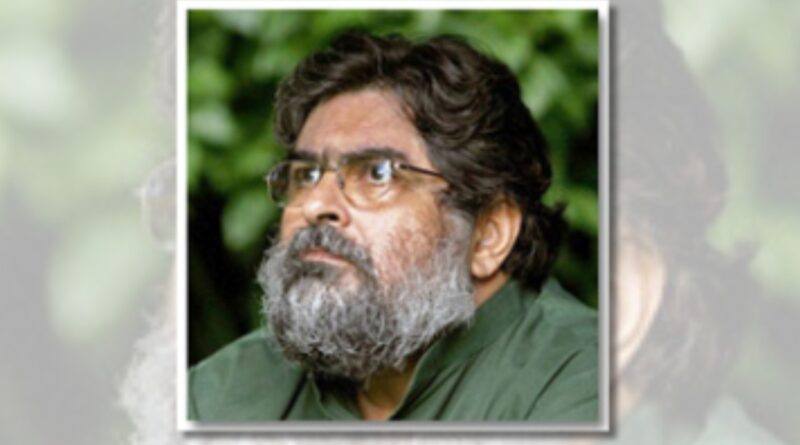Amazing Valmik: The Best Friend Of The Tigers, Ever
Valmik Thapar: The Man Who Walked With Tigers
It is not often that a single individual becomes synonymous with an entire species. In India’s conservation story, that individual was Valmik Thapar, and the species, the tiger.
When the news of Thapar’s death broke earlier this month, at his residence in New Delhi, it sent ripples through not just the environmental community but across generations of nature lovers, readers, policymakers, and filmmakers who grew up watching tigers through his eyes. Diagnosed with a form of aggressive digestive cancer, he passed away quietly—yet his legacy echoes in every rustle of the Ranthambhore grasslands and in every pair of wide-eyed students who pick up a Thapar book to understand the soul of the forest.
From the jungles of Ranthambhore to the halls of power in Delhi, from international wildlife forums to dusty village meetings with displaced communities, Valmik Thapar was a force of nature, equal parts romanticist and realist, passionate and prickly, public and deeply private.
This is not merely an obituary. It is a celebration of a man whose life was shaped by the tiger—and who, in turn, shaped how a nation and its diaspora saw their forests, their animals, and themselves.
The Accidental Conservationist
Born in Mumbai in 1952 to Romesh and Raj Thapar—both iconic figures in India’s intellectual landscape—Valmik could have easily followed the path of public discourse or international diplomacy. His parents co-founded the seminal journal Seminar, and growing up amidst left-leaning intellectuals and theatre doyens, Valmik was deeply exposed to the arts and socio-political thought.
But fate had other plans. A chance encounter in 1976 with the legendary forest officer Fateh Singh Rathore, then director of the Ranthambhore Tiger Reserve, changed the course of Thapar’s life. What began as a tourist’s curiosity quickly transformed into lifelong obsession. “It was like shedding one layer of skin and putting on another,” Thapar would later write. “The transformation was total.”
Despite having no formal training in zoology or environmental sciences, Thapar immersed himself in the study of wild tigers, not through laboratories or textbooks, but by watching, waiting, and witnessing—day after day, year after year.
Telling the Tiger’s Tale
Valmik Thapar’s genius lay in communication. Through books, films, articles, and impassioned public appearances, he translated ecological science into emotional experience.
His 1997 BBC documentary series Land of the Tiger introduced Indian wildlife to a global audience with a new cinematic and ethical vocabulary. The series was watched by millions and hailed as one of the most visually rich wildlife series ever made from the subcontinent.
In all, Thapar authored or co-authored more than 25 books, from field guides to autobiographical reflections. Works like Tiger: The Ultimate Guide, Tiger’s Destiny, and Tiger Fire continue to serve as seminal reading material not only for enthusiasts but also for policy advocates and educational institutions.
According to Penguin India, over 400,000 copies of his books have been sold globally, a rare feat for any non-fiction Indian author, let alone one writing about wildlife.
An Uneasy Insider in the System
Despite his public persona and immense knowledge, Thapar was never entirely comfortable being a cog in the bureaucratic machine. He served on numerous apex advisory bodies: the National Board for Wildlife, the Central Empowered Committee of the Supreme Court, and most prominently, the Tiger Task Force set up after the shocking disappearance of tigers from Rajasthan’s Sariska reserve in 2005.
Thapar didn’t pull punches. He was critical of officialdom, bureaucratic apathy, and populist conservation. “Bureaucracy killed more tigers than bullets ever did,” he once remarked—a statement that stung many but was echoed quietly in conservation corridors.
He resigned, protested, lobbied, and sometimes alienated allies. Yet even his staunchest critics conceded: Thapar never compromised on the tiger.
The Ranthambhore Years
Ranthambhore was not just a tiger reserve to Thapar. It was his spiritual classroom, the arena where his philosophies were tested, torn, and rebuilt.
In 1987, he founded the Ranthambhore Foundation, a pioneering attempt to integrate community livelihoods with conservation efforts. The Foundation worked in tandem with organisations like Dastkar, promoting handicrafts and economic alternatives for villagers displaced by sanctuary boundaries.
According to a 2015 report by the Wildlife Institute of India, over 70% of families in the surrounding villages of Ranthambhore showed improved household income after these interventions—a statistic often cited in development-conservation dialogues.
Thapar initially advocated for inviolate zones—areas completely free of human activity. But by the late 2000s, he had softened his stance, realising that community alienation would be the death knell of conservation. His evolved position—“conservation is impossible without community support”—became a bedrock idea in modern Indian ecology.
Thapar and Rathore: The Iconic Duo
Few partnerships in Indian conservation were as iconic, or as complex, as the one between Valmik Thapar and Fateh Singh Rathore. Together, they formed an indomitable duo—Rathore with his fieldcraft and administrative savvy, Thapar with his advocacy, articulation, and firebrand courage.
They differed, clashed, reconciled, and complemented each other in an organic rhythm. After Rathore’s passing in 2011, Thapar often spoke of his mentor with reverence tinged with grief. In one of his last interviews, he remarked, “Without Fateh, my journey began. Without him, it may have never mattered.”
Critics, Egos, and the Bigger Picture
No great figure is without contradictions. Thapar’s critics often labelled him egotistical, dramatic, and resistant to dissent. His famous falling-out with sections of the press after a critical exposé on Ranthambhore’s management in 2005 revealed the limits of his tolerance for negative coverage—even if well-founded.
But maturity followed. Months later, Thapar was among the first to acknowledge the “pro-people bias” in the Tiger Task Force report. He adjusted. He learned. He continued.
In his 2012 book Tiger: My Life, he wrote: “Yes, I failed to save many tigers. But not because I didn’t love them enough. Because the system that rules our forests fears love—it only respects control.”
The Final Years: Quiet but Never Silent
Though illness confined him in his last year, Thapar remained intellectually active. He mentored younger conservationists like Dharmendra Khandal of Tiger Watch, lent his voice to media investigations, and continued curating what many consider one of the most comprehensive private archives of tiger photography in the world.
Even a week before his passing, he responded to journalist queries about controversial conservation practices—from his hospital bed, no less—with precision, wit, and sharp indignation.
His final WhatsApp message to a journalist, sent while in visible discomfort, read: “Feeding tigers to make them visible? Absolute stupidity. We’re risking everything for a photo. What have we learnt?”
The Man Behind the Roar
Behind the authority and the outspokenness was a deeply reflective man. He could be humorous, childlike in his joy at a tiger sighting, and tenderly moved by forest sounds.
He was married to Sanjana Kapoor, actress and daughter of Shashi Kapoor and Jennifer Kendal, and together they raised their son Hamir Thapar, who occasionally accompanied his father on forest visits.
The Thapar household at Kautilya Marg in Delhi was known as a place of heated discussions, intense friendships, and sprawling bookshelves.
What He Leaves Behind
Valmik Thapar’s passing is more than the loss of a conservationist. It is the vanishing of an era—of bold visionaries unafraid to love a single species with unreasonable devotion.
The tiger population in India, as per the 2022 All India Tiger Estimation, stands at 3,167—a significant rise from 1,411 in 2006. While many played their part in this rebound, few can claim the emotional, moral, and narrative impact that Thapar brought to the table.
His legacy now lives on in:
- Dozens of young conservationists he mentored,
- NGOs he helped establish and guide,
- Books, documentaries, and photographs that are now part of educational syllabi,
- And most importantly, in the tiger itself—alive, walking the wild paths of Ranthambhore, Kanha, and beyond.
Final Word
In a world fragmented by causes, Valmik Thapar chose just one—and pursued it with almost obsessive singularity.
That choice made him enemies, friends, detractors, and disciples. But more importantly, it made him an icon for integrity, a reminder that in the fight for the voiceless, one voice—if persistent enough—can change the ending.
Valmik Thapar did not save all tigers. He would have admitted as much. But because he tried, more of them walk the forests today. Because he roared, we heard them purr.
Farewell, Valmik. The forest is quieter now. But it remembers.





